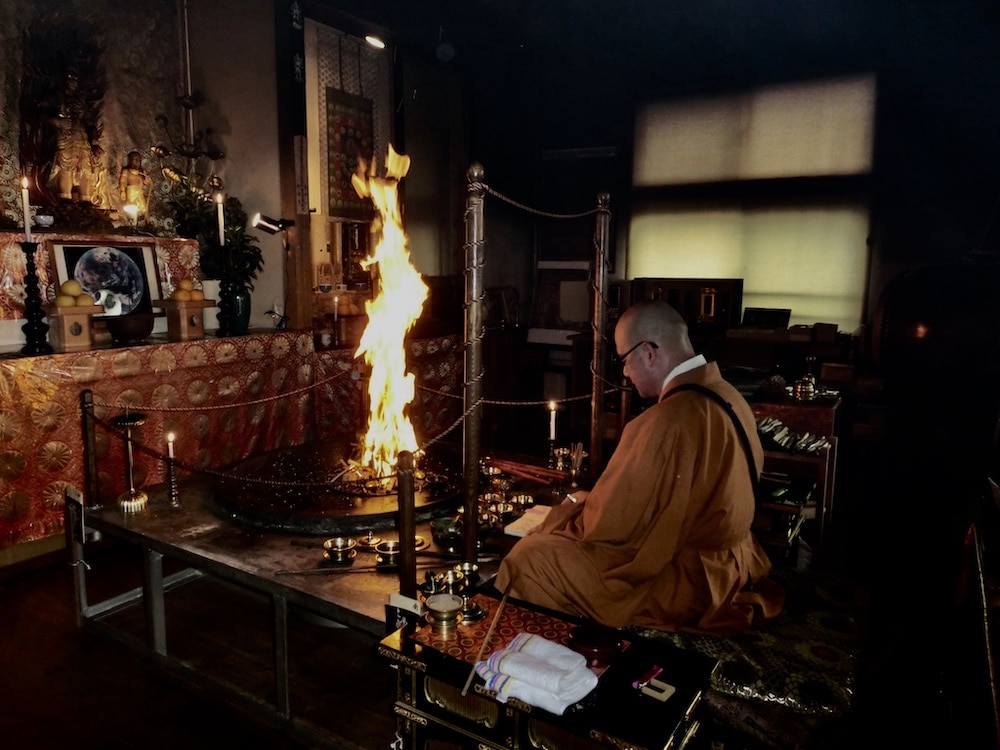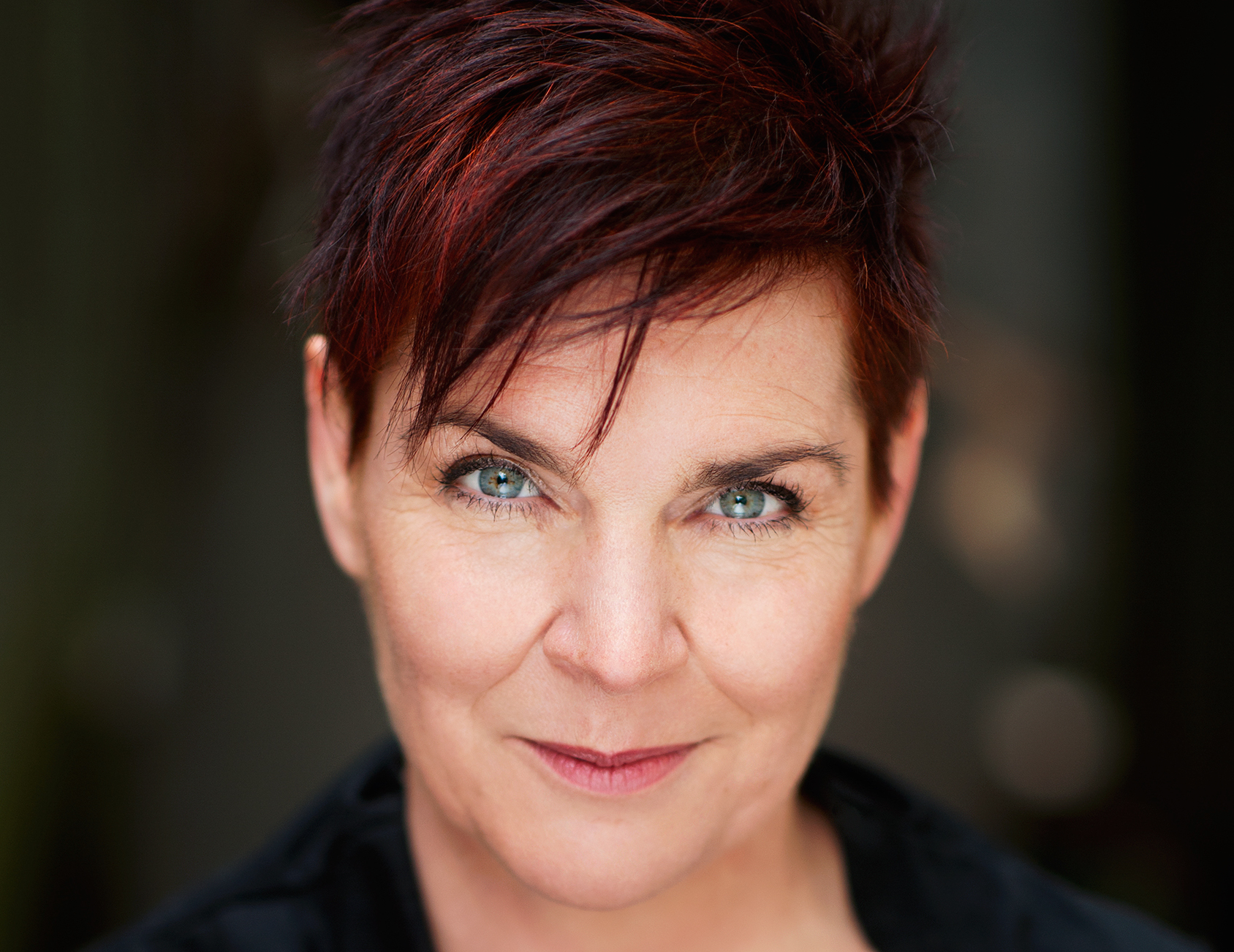
Goma is an esoteric Buddhist ritual practice burning wooden goma sticks on an alter in front of Fudo-Myo. The burning fire is Fudo- Myo burning away the cause of our suffering. No to be confused with GoMA the Gallery of Modern Art, in Brisbane Australia, which has a fabulous collection of contemporary Asian and Pacific art. A collection almost as good as the collection of 21st century Chinese art at the White Rabbit Gallery in Sydney. Both excellent distractions from suffering – but I digress.
In November 2019 I had the privilege to travel in Japan with Frans, Oliver and 18 other fabulous reiki practitioners, you know who you are; and thank you for your fabulosity.
The trip offered an opportunity to discover, witness and experience practices Usui Mikao would have practiced, as part of his personal practice, and have been included and/or are hidden in plain sight in the system of Reiki. Usui’s practices are Shingon and Tendai esoteric Buddhist practices that resonate with me, especially practices that are associated with Fudo-Myo. I was quietly hoping to experience or sit with some of these practices on the trip and if I was really lucky maybe I could witness a goma ritual.
I got lucky.
Goma
The luck – googling Fudo and Tokyo and having Fukagawa Temple returned as the top result.
The interwebs said Fukagawa Temple, in Tokyo, had crazy LED lights and the goma ritual 4 times a day and it was a 2-minute walk from a train station.
Ilona, Vicki and I, went to witness a goma ritual at the Fukagawa Temple (we had time to explore, before we met up with the rest of the group the following day).
We jumped on a couple of trains including navigating a change at Tokyo station and arrived at the Fukagawa Temple in time for the 11 am ritual. We won’t be the same: and it wasn’t the crazy LED lights.
It was the goma ritual and the whole temple complex being able to witness an ancient ritual that was still intact yet had evolved. It was the:
- feeling the intensity and focus of the energy the instant the priest set the intent to perform the ritual – like a switch turning on a light
- the fire and the ornateness and spectacle of the golden alter over the fire table
- the lushness of the costumes
- being and sitting as the energy
- the blessing of the handbags literally [that is the evolve bit: that and the camera crew recording the ritual as there was celebrity there]
- intensity of the sights, sounds and colours:
- the arrival of 3 conch shell playing priests/monks [I’m not sure how to tell them apart]
- the taiko drummers
- the colour, textures, shapes and lushness of the costumes
- the sound and energy of the chanting
- recognising the Fudo mantra and the heart sutra being chanted as part of/during the ritual
It was the 5000 crystal stupas, representing the five elements, each with a carved fudo in the base lining a walkway the wends its way around the lower floor around the back of the alter where the Goma ritual is performed
It was the room lined with fudo statues some the size of me large, to some the size of a child – at least 100 [ a guesstimate]
It was the massive carved wooden Fudo at least 3 metres high greeting you on arrival
It was a room that felt so very good/right to stand in front of – it turned out to be a room that blessings were done
It was a room with a spectacular ceiling, according to the website, this is true although it did not mention the much more spectacular very large gold Dainichi Nyorai statue, the walls covered in golden plaques with the image of Dainichi Nyorai and the rows of large statues lining the room and peace of just sitting in the space being.
tiny mind
blown open
still processing
temple buddhism
Goma
The luck – our group arrived Myo-ji Temple, on Mt Hiei just as a Dai-Ajari arrived to practice the Goma ritual.
Two different trains, a walk through a quintessential Japanese mountain village and a cable car trip and our group arrive on Mt Hiei. Mount Hiei is a training mountain for Buddhists where priests and monks train, live and practice and, the home of countless temples.
Frans wanted to visit Mudo-ji temple. Fudo-Myo is the deity associated with the temple and it is also associated with the marathon monks who complete the Omine Thousand Day Circumambulation Practice. A 1000-day practice running up and down Mt Hiei each day practicing at 270 shrines along the route. When the practice is complete the practitioner is considered a living buddha, a Dai -Ajari.
Our group travelled as a pack, following Frans, walking down the mountain path in the crisp air and the gentle rain.
When we arrived at the temple, we saw a monk/priest with an umbrella go into the temple [ I still don’t know how to tell the difference]
We got lucky. It was a monk who is a Dai Ajari about to do a goma ritual/practice and we were able to witness and participate in the ritual.
This instance of the Goma ritual was one person’s practice, shared with a few. There was an assistant prompting us to join in chanting the heart sutra and/or the fudo chant. I was lucky to be able to participate and chant the fudo mantra [and mumble the few lines of the heart sutra I have learnt so far].
This time the goma ritual appeared simpler and I thought of it as a personal practice of the Dai Ajari, just him and his practice [simpler in the respect that there were no conch shells, taiko drums, spectacular costumes and supporting voices chanting while the priest focused on performing the ritual with the fire – all also personal practices]
We were blessed by the Dai Ajari [with 2 resounding wacks on our backs with his mala] and the ritual was complete and the Dai Ajari simple left, another practice complete nothing special.
Michelle thank you so much for your interpreting which enabled us to receive the blessing.
My clogged up encrusted heart was blown open we were all so much more alive as waltzed /floated easily up the hill we had cautiously trekked down less than an hour earlier.
My heart crust shattered in a simple wooden temple, I felt so incredibly stable grounded the ground came to mid-calf and my head space was so big and clear and expansive but not lost in space, simply spacious.
encrusted heart
blown open
still processing
mountain buddhism
Goma
The luck – the group wanted to check out Fukagawa temple and the Goma ritual on the last day of the trip.
Two train rides and I am back at Fukagawa temple, this time as a large group. The third Goma ritual was different again. This time it felt shorter, with just one taiko drummer, the monks robes less ornate – the same energy about the practice but less about the show/drama as if this was the everyday practice.
I was a bit cheeky by sitting with/near a priest/monk through part of the blessing of children [I recognised part of the heart sutra in the blessing] and starting to understand why that space felt as it did when I first visited.
I experienced so much in the practices and places we had visited in the last 14 days it felt like a fitting end to the trip sitting as/permeated by energy in the room of golden Dainichi Nyorai
cup overflowing
and cracking
still processing
temple buddhism
Goma
The luck – just rocking up to explore
Ilona, Vicki and I had an extra day in Narita before we flew back to Australia and had heard the was a temple, Naritasan, nearby. A quick google and we found the web site that said a a Goma ritual was performed daily
It interesting I think of places near airports as towns simply there to service the airport it is a new /young/colonised country perspective not having the understanding to ask what was going on 1200 years before airports became a thing. In Narita it appears, that 1200 years before airports, was about Fudo-Myo, Dainichi Nyorai and Kengo Dashi. Kengo Dashi is referred to in the in the Kaji healing service and started the Shingon sect of Buddhism [If you ever come across a book called Kaji get it is better than fabulous]
We arrived at the Naritasan temple not really knowing what to expect. Walking up the stairs to the temple complex it felt very old. The stairs were flanked by statues of Kurikara Fudo; the sword of Fudo-Myo which itself is a deity. So many Kurikara Fudo, so old, so dense, so deep, so solid, so wet. I kept asking myself what have we walked into; it was intense, different yet familiar.
Arriving at the main temple we heard chanting, the last minutes of the Goma ritual. We went exploring and discovered [with the aid of the site map] a very old library of Buddhist texts and were on our way to the Fudo temple when we heard drums which we took as a call to the Goma ritual so we abandoned finding Fudo and went to the see the Goma ritual
The ritual was different again: this time a shorter and simpler practice [small drums [not the big taiko drum], lush coloured damask robes, no conch shells]. We were able join in with the heart sutra and the fudo mantra in the ritual. The blessing at the end was different with participants running their hands along the length of rope behind the fire.
Sitting in the space after the ritual I see a large womb mandala on the wall on side of the alter and my mind is blown again I had only seen it in pictures before.
The find of the day was the Komyo-do hall with a Fudo image carved in the 900’s, a Dainichi Nyorai buddha and a small golden alter that looked like a alter for Goma
saturated
kurikara fudo
goma
still processing
still processing
still processing …
Based in Australia, Bronwen Logan (Stiene) teaches the system of Reiki is co-founder of the International House of Reiki and Shibumi International Reiki Association as well as co-author of the critically acclaimed books The Reiki Sourcebook, The Japanese Art of Reiki, A-Z of Reiki Pocketbook, Reiki Techniques Card Deck and Your Reiki Treatment. Bronwen is also the voice of their audiobooks and of the Reiki meditations available in the shop.

